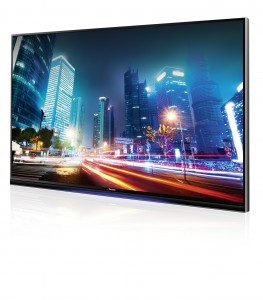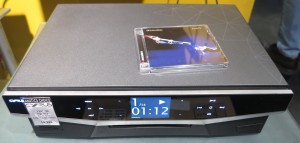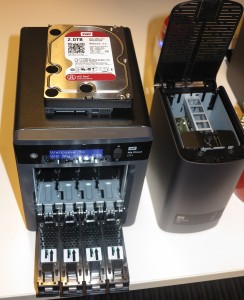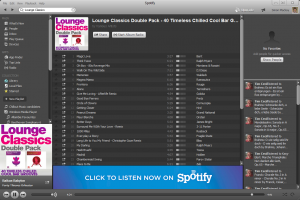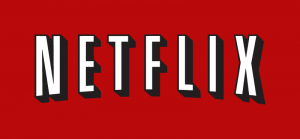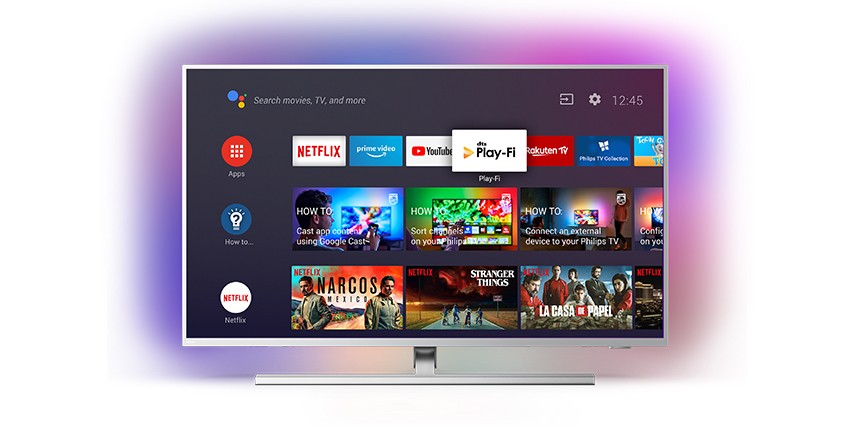![]() Another major trend that has come about over the past five years is increasing interest in “connected entertainment”. This has been augmented with the role of smartphones, tablets and computers having access to online content services, typically through natively-coded client-side apps.
Another major trend that has come about over the past five years is increasing interest in “connected entertainment”. This has been augmented with the role of smartphones, tablets and computers having access to online content services, typically through natively-coded client-side apps.
But it is also about a surge in the availability of traditional devices that are associated with entertainment being connected to the home network and drawing down online content from various sources.
Network-capable entertainment devices
Increasingly we are purchasing network-capable entertainment devices that are fit for use in the main living or family areas of our homes.
Firstly, most TV manufacturers are supplying “smart TVs” that have network connectivity and access to online content services. Typically the manufacturers, primarily the “big-name” companies are offering this towards mid-range and premium models in their product lineups. This feature is also being extended to Blu-Ray players, “home-theatre-in-box” systems and the like so you can add this feature to existing TV sets which is important as TV sets last a long time and are capable of being “pushed down” to secondary viewing areas. It is also a key feature for any of the newer 4K “ultra-high-definition” TVs that show images that are sharper than the regular Full HD TVs on the market.
Similarly, network-capable music-playback devices are reaching standards that befit high-quality music reproduction. Here, these devices are either as “wireless speakers”, integrated music systems or hi-fi components that can be connected to existing hi-fi systems.
The “wireless speakers” are single-piece tabletop speaker systems that connect to the home network in a manner similar to what Sonos envisaged with their products. Here, you can have a group of these speakers that are connected to the same network play the same audio content without them being out of sync. Most of the setups may work in a “party-mode” setup where they play the same content whereas an increasing number of these speakers can allow you to set two like units up as a wirelessly-linked stereo pair for increased stereo separation or wirelessly link a subwoofer to the speaker to provide some extra bass. A trend that could easily come about is to have a wirelessly-linked multiple-speaker setup for surround sound, which could make this concept more appealing because of the absence of wires.
At the moment, Wi-Fi-based multiroom wireless speakers will work with other speakers that implement the same technology, typically by having the same or compatible chipsets. This is because no standard has been defined for these kind of speaker setups.
Another device that is being considered highly important for the “connected entertainment” world and is something that every home network will have to have is the network-attached storage appliance. These devices work as “always-on” media servers that can provide audio, image and video content and most, if not all of them implement UPnP AV / DLNA and iTunes / DAAP media-server functionality to do this on a level playing field. This means that you don’t need to run a desktop computer all the time to make the latest photos or the music you ripped from your CDs or downloaded from iTunes or similar services available to your smart TV or your network-connected stereo equipment.
Online Content Services
Previously, online content services were typically Internet radio services which offered global access to Internet-hosted simulcasts from various broadcast radio stations and networks. I saw this as the “new shortwave” because you could hear a radio station that is local to a particular city or town through this setup and these have been facilitatied by a few Internet-radio directories like TuneIn Radio and vTuner.
Now we have seen the arrival of the “global jukebox” in the form of music-streaming services like Spotify, Deezer and Pandora. These services allow you to legally stream an album, song or playlist via the Internet and work either for free with advertising or for a modest monthly charge. They are becoming a way to, for example, sample music you are interested in or even just listen to music for a modest cost or for free.
For music, the buy-to-download business model still exists courtesy of the likes of iTunes, Google Play, Amazon or most other online stores. There are some label-direct music stores that offer music on a “buy-to-download” basis. Most of these services offer the music as CD-quality 320kbps MP3 or 256kbps AAC files for each album track but some are offering them as master-quality FLAC or similar files. As well, most of these tracks are being made available as single tracks for pennies’ worth for those of us who want to construct the perfect playlist.
This is also including music distributors and online retailers like Amazon who sell us vinyl records or CDs that come with “pre-ripped” MP3 files that are available to download. For most of us, this avoids the need to rip the CD or to copy the record to the computer’s hard disk so it can be heard over the network or on our portable devices.
Online video is mainly driven by the likes of streaming services like Netflix who are even producing their own content as well as licensing other parties’ content. They are also being augmented by “catch-up TV” services where one can view one or more previous episodes of a TV series “on demand” after it was shown. Because these services are yielding high-quality content, they have led to people in the US abandoning their cable-TV services and watching content on these services.
Most such services are nowadays being delivered via set-top boxes that connect to your home network and implement a native front end to these services. But, as smart TVs come on the scene, anyone who offers a video-on-demand service has to provide a native front-end for the main smart-TV platforms.
In some parts of Europe, ADSL and fibre-based next-generation broadband is being used to deliver pay-TV. This is more so as part of telecommunications companies offering a “single-pipe triple-play” service to their customers where one connection to the customer’s home carries broadband Internet, landline telephony and multi-channel pay TV.
They have also implemented a “hybrid broadcast broadband” platform for television where it is becoming feasible to provide TV content services, including interactive TV, by interlinking traditional broadcast TV with content available via the Internet. Broadcasters primarily use this to deliver a supplementary video-on-demand service such as a catch-up TV service to the main TV set.
At the moment- there isn’t a level playing field for providing video content on an “electronic sell-through” or “download-to-own” basis in a similar way to what is being used for audio content. There are still issues with digital-locker services or digital-rights mechanisms binding users to particular content platforms or the risk of people losing access to the content they bought if an electronic-sell-through platform ceases to exist. They are not at a point where you could buy a movie or television series online and download it to a NAS for viewing at home knowing that you still have access to the movie even if the vendor goes off-line.
Conclusion
It will take some time to bring some video content-delivery services to the home network in order to have it accessible on the main TV set, but the home network has become an entrenched part of our entertainment lives/

